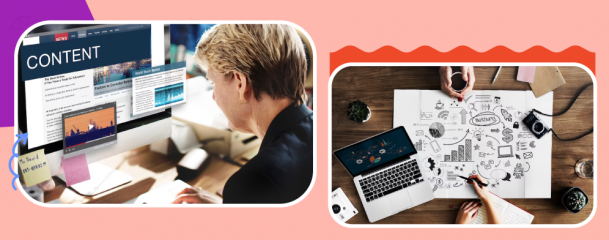1. What Is A Workforce Learning Platform?
Workforce learning platform is an online training and development system designed to help organizations develop their workforce.
It enables employees to access, engage, and learn from content that is tailored specifically for them. Through a variety of tools, the platform allows users to easily navigate through courses, collaborate with peers on projects and participate in activities.
2. Benefits Of A Workforce Learning Platform
A workforce learning platform provides employees with the ability to learn new skills on their own terms and at their own pace. It allows employers to provide easily accessible training for staff members that would otherwise be too costly or difficult to obtain. A learning platform can help create a culture of continuous learning and development within an organization, fostering a more engaged and productive workforce. When it comes to designing engaging content for a workforce learning platform, it is important to consider the needs of your target audience.
What are they trying to learn? What motivates them? How can you make the content accessible and easy to understand? By taking the time to create content that is relevant and engaging, you can ensure that your employees are more likely to retain the knowledge they acquire through the platform.
Having an effective learning platform allows employers to track employee progress and identify areas where further training may be needed. This helps employers assess the effectiveness of their learning resources, ensuring that learning initiatives are tailored to the specific needs of the individual employee. It can also help employers save time and money, as they no longer need to invest resources into traditional training methods.
3. Create Engaging Content

Engaging content helps to motivate and encourage employees, allowing them to develop a greater understanding of the topics being taught. Content that is well-crafted and tailored towards each individual's needs will help employees stay engaged and retain more information during training sessions or courses.
3.1. Know Your Audience
Understanding who your audience is and what their needs are will help you create content that resonates with them. Ask yourself questions such as, “What do my learners need to know?”, “What problem are they trying to solve?”, or “Which topics appeal to my learners?”
Once you know the answers to these questions, you can create content that meets their needs.
3.2. Make it Interactive
Content should be engaging and interactive to keep learners interested. Incorporate activities, quizzes, simulations, or other hands-on elements into your content. Allow for collaboration between learners or consider using an adaptive learning platform for personalized instruction.
3.3. Use A Variety of Formats
Different learners learn in different ways, so it’s important to use a variety of formats when developing content for workforce learning platforms. Visual aids such as infographics and videos can be effective tools for engaging learners, while podcasts and webinars are great for providing audio-visual content.
3.4. Consider Mobile Learning
More and more people are using mobile devices to access content, so it's important to make sure your content is optimized for these platforms. Consider creating courses that are designed specifically for use on a mobile device or making existing course materials available in mobile-friendly formats.
3.5. Keep it Fresh
In order to keep learners engaged, it’s important to regularly update your content. Add new and updated information on a regular basis to keep things fresh and relevant. You can also consider using gamification techniques to make learning more fun and engaging.
4. Challenges Faced When Creating Engaging Content
Creating engaging content can be a challenge, especially when it comes to workforce learning platforms. The audience for these types of platforms is often highly diverse and spread across multiple locations. This can make it difficult to ensure that the content resonates with all audiences, no matter their location or background.
Some learners may be more comfortable with traditional methods of learning, while others may be more engaged with newer digital technologies. It’s important to consider these different preferences when creating content for workforce learning platforms.
Other challenges faced when creating engaging content include finding relevant topics that appeal to a wide variety of learners and making sure the content is up-to-date and reflective of the changing landscape of the workforce. Creating content that is engaging and interactive can be a challenge, as most learners have shorter attention spans than in traditional classrooms.
It’s also important to find ways to make the learning process enjoyable and motivating so that learners are more likely to stay engaged with the content. There are many tools and strategies available to help make creating engaging content easier.
By taking into account the preferences of different learners, staying up-to-date with current trends, and making sure the learning process is enjoyable, organizations can create content that is both effective and engaging. In doing so, they can ensure that their workforce learning platforms are successful in helping employees reach their full potential.
5. How To Measure The Impact Of Your Engagement Strategies?

In order to measure the impact of your strategies for engaging employees on a learning platform, you need to track and analyze data. There are several metrics that can be used to gauge employee engagement, such as completion rates, time spent on the platform, activity levels and user surveys. By tracking these metrics over time, you can get an idea of whether your engagement strategies are having a positive impact on employee learning and development.
One of the most important things to keep in mind when measuring employee engagement is that it is not a static concept. What works to engage employees today may not work tomorrow, so it is important to constantly experiment and try new things.
Different employees will have different preferences for how they like to learn and what type of content they find engaging. As such, it is important to offer a variety of engagement strategies and let employees choose what works best for them.
6. Final Word
Creating engaging content for your workforce learning platform is essential to ensure that employees are engaged in their development and eager to learn. By using multimedia, interactive elements, gamification strategies and other innovative approaches you can keep learners motivated and focused on the material at hand.
By delivering timely feedback about learner progress you will be able to identify where they need more support or additional guidance so that they can reach their goals faster. With a well-designed learning program featuring compelling content workers will become better equipped with the skills needed to succeed in their roles now – as well as into the future.
7. FAQs
7.1. What is a workplace learning program?
A workplace learning program refers to a structured initiative designed by organizations to enhance employees' knowledge, skills, and competencies within the work environment. It typically involves training sessions, workshops, mentorship, e-learning modules, or on-the-job experiences aimed at continuous professional development and improving job performance.
 Interested in Virtual Team Building Events?
Interested in Virtual Team Building Events?





















